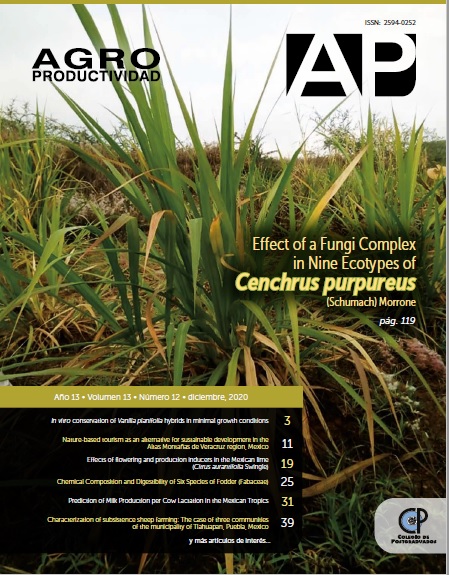Effect of a fungal complex on nine ecotypes of Cenchrus purpureus (Schumach) Morrone
Main Article Content
Keywords
Growth, Forage, Mycorrhiza, Elephant grass, Yield
Abstract
Objective: The objective of this study was to evaluate the response of different concentrations of a fungal consortium on the growth and yield of ecotypes of Cenchrus purpureus under storm conditions.
Design/methodology/approach: An experiment was established under a completely randomized design with a 9x2x4 factorial arrangement. The factors were 9 ecotypes of Cenchrus purpureus; two times of the year (summer-autumn and winter-spring) and four levels of mycorrhizal consortium. The variables evaluated were: number of shoots, number of leaves, and height of the shoot, leaf length, total biomass and leaf-stem ratio.
Results: The response of the ecotypes had a differential effect on the variables NB, LHG, BT and RH / T. While the time affected the variables NH, AB, LHG, LHM, LHCh, BT and RH / T. Low inoculation levels increased the variables NB, AB, LHG, LHM and BT.
Limitations on study/implications: The evaluated factors indicate that the level of inoculant and the season determine the growth and yield of Cenchrus purpureus.
Findings/conclusions: The mycorrhizal consortium dose and time of year mainly determined the growth and yield of C. purpureus. Ecotypes respond differently to changes in mycorrhizal consortium dose and season. The evaluated factors indicate that the mycorrhiza dose and the time of year determine the growth and yield of C. purpureus. Two growth strategies of the ecotypes are visualized: 1) many shoots, with few small leaves and 2) few shoots with many large leaves.

